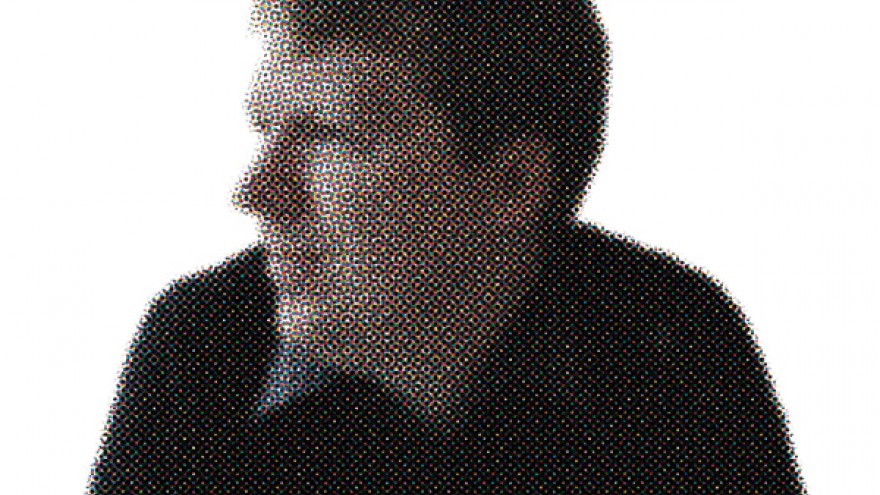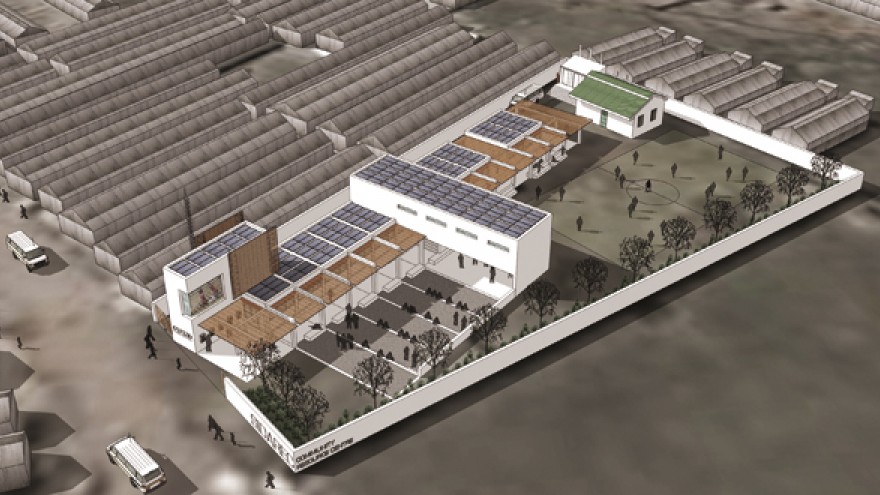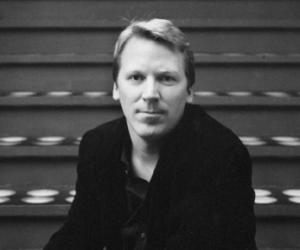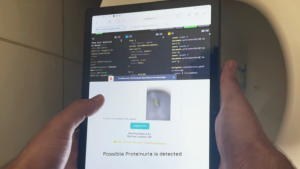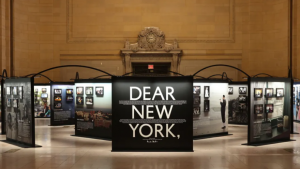Part of the Project
First Published in
Is Cameron Sinclair the Jamie Oliver of architecture? "Well, people have called me lots of things, like the Bono of design and the Al Gore of development, but Jamie Oliver? I suppose if you mean that I take a lot of simple, good ideas and combine them in new ways, then I am like Jamie Oliver," concedes Sinclair. Yup, Sinclair's a nice guy.
Not a nice guy as in the nice guy that wears a plastered smile, keeps his opinions close to his chest, always remembers a face or knows how to introduce people at parties. On the contrary, the principal of Architecture for Humanity and founder of the Open Architecture Network might be the last boy-next-door, but that doesn't stop him from gate-crashing World Economic Forum meetings, consulting for Zimbabwe's opposition parties, refusing money from unpleasant donors, or having a self-congratulatory "Where is Cameron?" link on his organisation's website.
"I never knew how big this was going to be. When I started in 1996, I really thought it was just going to be a couple of mates who did projects. But as soon as I realised that there was a lot of interest, I also realised that if I cherry-picked the really great projects, it would never grow or scale. I made a conscious decision in 1999 never to do any of these projects," explains Sinclair.
"He makes nice cool," an architect friend of mine explains her adoration of Sinclair. "I have met many young architects who, while draughting revolting luxury hotels for some successful selfish egocentric boss, dream of designing low-cost housing that they would build with their own hands. Or inventing post-disaster solutions. Many of us became architects because we thought we would make ordinary people's lives better, we would be social activists. Cameron Sinclair is our hero," she goes on.
Of course, to labour under the impression that Sinclair just happened upon a need among architects and just happened upon success, would be naïve - even if he might like you to think so. The story goes that Sinclair developed an interest in humanitarian design during his studies in London and that his postgraduate thesis entailed a housing solution for homeless people in New York. Upon completing his studies in 1996, he returned to New York, took up a position as a CAD monkey and became increasingly frustrated with how rarely he was given the opportunity to engage with real-life problems.
In 1999 he became aware of the Kosovo conflict and, together with some colleagues, recognised the potential for a transitional housing solution for returning refugees. Now, here comes the first turning point: About to embark on the design himself, Sinclair realised that if he solved it himself, the solution would do nothing more than bump up his portfolio. So, instead of solving the refugee-housing crisis in an afternoon, he and his partner Kate Stohr established Architecture for Humanity (AFH), which partnered with refugee charity War Child USA and launched its first open competition six weeks later. Within three months, they had received more than 200 entries from 30 countries. It is this competition-based collaborative experience that has become the core of AFH's success.
"I haven't regretted that decision because I've spent the past 10 years designing systems and mechanisms for architecture and design to flourish in the humanitarian world settings. A lot of these UN agencies and NGOs that we are working with have never had an architect or designer working with them. It is very new and we have to establish a way of working with them. I mean, some of them expect us to put the lipstick on the pig - they call us when a project has gone badly and it's broken, and they want the designers to make it pretty. We don't make it pretty, we make it right," says Sinclair.
"No-one wants charity, no-one wants a handout and they don't want to be treated like a handout. People just want mechanisms to empower their own lives. We do deals with the communities that we work with - actually, we have a contract that the community has to take a role in getting these projects started. You can give communities something cheaply and walk away, but we partner with the community and the designs are far more robust because of that, allowing one to do training and start micro-businesses.
"In Sri Lanka, for instance, we built this huge community complex with stores, help centres, community locations, a cricket pitch and government offices. People look at it and say 'That's a nice building' but when I look at it, I think of the hundreds of community people that helped build it. So, we're using design as a catalyst, which is how it should be - my donors are not donors, they're seed funders, and we're finding mechanisms to ensure self-sustainability," Sinclair goes on.
Still, as glib as he can be now, for the first three years AFH was Sinclair and Stohr working out of their apartment, running design initiatives and competitions over and above their professional day jobs. Following the Design Ideas for Mobile Health Clinics to Combat HIV/Aids in sub-Saharan Africa project in 2002, a tipping point came in 2003 when AFH started raking in a continuing stream of awards. Sinclair also started his Design Like You Give A Damn lecture series, donating all the proceeds towards the organisation.
In 2004, Sinclair and AFH took on their toughest project to date: The Siyathemba project in KwaZulu-Natal, which entailed building a soccer pitch that could act as a health centre, be home to the region's first female soccer team, and offer a gathering place for the region's youth, who are three times more likely to be HIV-positive than the youth of the rest of the world.
"I think your most difficult project will always be your favourite project. It was rife with politics and issues, and it was a huge learning process for us. I never give up on a community and hopefully they don't give up on me. This project has taken a long time to do because we're breaking a lot of boundaries including gender boundaries and taboos about health," ruminates Sinclair. But Siyathemba has not gone unnoticed as, based on this pilot project, FIFA recently announced the funding of 20 more such pitches around Africa in the run-up towards the 2010 World Cup. Woolworths are also funding another project in KZN based on Siyathemba.
Meanwhile, back in 2004, AFH start hitting the hard news headlines with their housing solutions for the Bam Boxing Day Earthquake in Iran and the tsunami in Sri Lanka. In 2005 AFH snowball: They head up the rehabilitation project of the Gulf Coast following Hurricane Katrina; assist on the island of Grenada following Hurricane Ivan; develop design shelters in Paris and New York; launch mobile HIV/Aids clinics in Nigeria; and develop a school of leadership and arts in Calcutta, to name a few.
Then comes turning point two. In 2006 Sinclair wins the TED Prize and his wish to change the world is the establishment of the Open Architecture Network (OAN), which escalated AFH to 12 000 people and 2 000 projects in just one year. "Management-wise people don't really know what goes into a website. They think it's someone sitting in a basement doing code and putting up jpegs, whereas the reality is that it takes a lot of people. We have had a lot of good will from the technology world with engineers from Sun Microsystems, AMD, Creative Commons and Google getting involved, because we are showing what you can do with open source," enthuses Sinclair.
Constantly pushing technological boundaries and highly integrated with Google Earth, OAN will also soon be launching software that allows architects to upload their CAD drawings directly on to the site, making it possible for anyone to download the plans. See, the OAN is where the social networking capabilities of something as trivial as Facebook's hatching eggs and Second Life's virtual reality can actually translate into a housing solution. In fact, one of the finalists for the AMD 50x15 Challenge was a solution designed in Second Life by a group of architects who had only ever met as avatars.
The AMD 50x15 Challenge was the first major competition to be hosted on the Open Architecture Network, which was launched in 2007. "50x15 is AMD's long-term commitment to enable half the world with Internet access by 2015. It became clear to us within what we call the 'digital ecosystem' that one of the greatest impediments in delivering digital enablement to people around the world had to do with the notion of having to retrofit technology into existing spaces," explains Dan Shine, vice-president of 50x15.
"Dan and I asked ourselves, what does it mean to bring technology into communities in need, particularly in emerging markets all over the world? What is the purpose of having technology in a community if it's not serving their needs? What became readily apparent to both of us is that technology should empower and enable social and economic change within those communities," continues Sinclair.
As a result, the AMD 50x15 Challenge first ran a competition for communities in need to apply for a solution. Only after selecting three communities was the competition opened for architectural solutions. Despite the only prize being seeing the solution built, the competition generated over 560 entries from 58 countries.
See how Sinclair's second turning point of going blockbuster has magnified the effect of the first turning point? By scaling the solution to a competition level, he can get funding. With funding, he can make it easy enough for contributions, however incremental, by everyone and anyone, to amount to something worthwhile. "We collect a quarter of our income from high school kids' hot chocolate sales. For Myanmar, Burma, 95% of our funding came from $50 donations - we didn't get a single large corporate donation," points out Sinclair.
This grassroots support is significant for an organisation that is known for having turned donors down. The role and integrity of the donor is essential to Sinclair, who insists that AFH act only as facilitators. There is an AFH code: there are no victims, only clients - even if the client has just had everything they own destroyed by a natural disaster; practicality comes first but if something's not beautiful, it won't be looked after; while professional judges may draw up the shortlist, the client/community still chooses the final solution; and when it's a matter of survival, sustainable trumps green - even if all their buildings are off the grid, AFH never claim to be green.
"The designs are not those sexy architectural structures that look impossible to build. These are pragmatic solutions that are about appropriate implementation in communities. This isn't about sexy architecture, it's about changing the lives of the community. We're talking about protecting and conserving natural environments, about energy consumption, about transportation... When we talk about architecture, the biggest myth is that we're just architects. A lot of people assume that we just do the skin of buildings, but we have whole multidisciplinary teams working on projects that range from changing a city dump in India into a park, to community dwellings and houses. And, quite often, the solution is not a building," explains Sinclair.
Now in 2008, at 34 years of age, Sinclair has been chosen as one of 250 Young Global Leaders out of a pool of 4 000. This meant his first visit to the World Economic Forum by invitation - he has gate-crashed three times before. It may also mean his third turning point. If the first turning point was realising the power of incremental scale and community, and the second turning it into a blockbuster, then the third will be to speak to the people in power and take it to policy level.
"My biggest success will be if in five years' time I become a financier of these projects, no longer coordinating, building and all of that. Instead, I will go round organising and allocating the money," says Sinclair, who says he will stick to his strategy of taking the boardroom to the field. "I took one of our donors to the most remote part of Western Nepal on a trip. Instead of a five-star hotel he stayed with us in a room above a butchery, with only a pit toilet. This is the reality, I told him, while you are sitting there deciding on a few thousand dollars, these kids are living on 40c a day."
Sinclair is also thinking of setting up satellite offices in South Africa, India and Kenya, and is working on his first building in five years: A solution to the Design Indaba 10x10 Housing Project. But even this, he says, was a collaboration with people in his office. "The hardest thing of what we do is authorship. Who is the author? The media tends to want one author and when you explain that there are hundreds, they say 'But that's really hard for my story'. And even worse, sometimes they choose me because they meet me and I tell them the story and about the designers," he shakes his head.
So, who can possibly dislike such a nice guy? "People dislike us [AFH] when we say no to them - we choose the communities we work with. We can also upset the apple cart in local government and organisations - we've even had death threats and had to leave a country. Also, the establishment or status quo of architects sometimes don't understand what we are trying to do and think that we're trying to compete with them. So, basically, when people don't understand what we're about," laughs Sinclair, who admits that being nice is AFH's business strategy.
"We're nice people. We work with nice people, we hire nice people and if you're an asshole or arrogant or don't care, I'm not going to work with you. If you're a donor who doesn't care about people or doesn't believe in the power of what you can do, I'm not interested in you. So, the people that we hire in our office and the people that we surround ourselves with are nice. It's truly hard to hate someone who's nice," he concludes.

